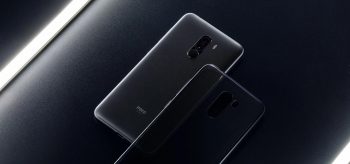
Is Xiaomi’s Pocophone F1 really a OnePlus killer?
When the OnePlus One launched, it was dubbed the “flagship killer.” The phone features most of the high-end specs we see in flagship Android smartphones but sold for half of what high-end smartphones did at the time. Over the years, OnePlus has slowly increased the price point of its phones but has managed to still offer a great value to consumers since the average price point for top-of-the-line Android devices now starts at $750.
And that’s where Xiaomi’s new Pocophone brand comes in with the Pocophone F1.
After months of rumors and speculation, Xiaomi has officially launched its Pocophone sub-brand. The company has always sold smartphones that are cheaper than the competition’s, but the company has struggled to break into the European and North American markets — an issue it aims to resolve with its new Pocophone brand. The idea really isn’t new since OnePlus is really just an Oppo sub-brand (ok, technically the company is listed as a “wholly owned Oppo subsidiary”). But you get the point.
The question is, can the new Pocophone F1 really compete in the space that OnePlus has carved out for itself? Let’s find out.
The Pocophone F1’s design is fairly unassuming. The phone is built with polycarbonate rather than glass or metal. While the build material will feel cheaper than other build materials, it should be more durable and offer more protection to the phone when dropped. The phone is running on the latest Qualcomm Snapdragon 845 SoC with a liquid-cooling system to keep the chip running optimally. It also has a veriety of RAM/storage configurations which include 6GB/64GB, 8GB/128GB, and 8GB/256GB. It features a 5.99-inch IPS LCD display with a resolution of 1080×2246 pixels (416ppi), a 12MP and 5MP dual-camera setup on the back, offering portrait mode like most other smartphones these days. There’s a 20MP sensor on the front. The phone’s 4,000mAh should be more than enough to keep the Pocophone F1 chugging along through a long work day and the 9V/2A Quick Charge 3 charger will be able to top off the battery in a little over an hour.
https://www.youtube.com/watch?v=9FqpI1LJvDw
The phone features a fingerprint sensor on the back, but it also has an infrared-based face unlock sensor embedded in the notch up front, allowing the phone to be unlocked with your face even in low-light conditions.
Features that are missing include wireless charging, dual-speakers, and NFC, but it does include a 3.5mm headphone jack, USB-C charging port. The phone is running on Android 8.1 with Xiaomi’s MIUI 9.6 with the new Poco Launcher which gives MIUI a stock Android feel and feel. Xiaomi has also promised that the Pocophone F1 will be updated to Android Pie before 2019 rolls around.
As you can tell from the Pocophone F1’s specs, the device is pretty comparable to the OnePlus 6. But since the phone’s design and build materials are definitely not in the “premium” category, the phone’s price is where it truly finds its advantage. The Pocophone F1 with 6GB of RAM and 64GB of storage is selling for $300 while the model with 8GB of RAM, 256GB of storage and a Kevlar back sells is going for $430. For comparison, the OnePlus 6 starts at $529 and goes up to $629 if you want 8GB of RAM and 256GB of storage.
If you’re not too concerned about the phone’s external build materials, the Pocophone F1 is definitely the better option when compared to the OnePlus 6 and pretty much any other flagship Android smartphone.
So, what’s your take on the Pocophone F1? Do you think it will replace OnePlus as a “smartphone killer” brand?